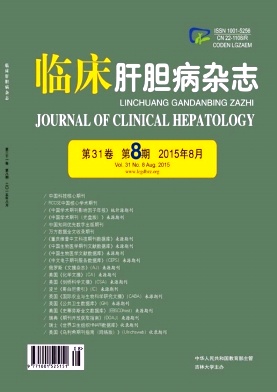Objective To observe the clinical efficacy of artificial extracorporeal liver support therapy in the treatment of pediatric acute liver failure( PALF) and to analyze the associated prognostic factors. Methods The clinical records of 23 patients with PALF treated from January 2012 to February 2015 in the Pediatric Intensive Care Unit of the First Hospital of Jilin University were analyzed retrospectively. After three- month follow- up,15 patients survived( survival group,n = 15),while 8 patients died( death group,n = 8). The changes in biomarkers of liver function and coagulation function after treatment were evaluated within groups. At the same time,the above parameters and Model for End- Stage Liver Disease( MELD) score before treatment were compared between the two groups. The efficacy of artificial extracorporeal liver support therapy was analyzed,and the prognostic factors were reviewed. The t test was applied in the comparison of continuous data. Results In the survival group,the levels of serum alanine aminotransferase( ALT),total bilirubin( TBil),ammonia,and lactic acid were significantly reduced after treatment( t = 8. 812,6. 243,8. 431,and 6. 721,respectively; all P < 0. 01). However,in the death group,only ALT level was significantly reduced after treatment( t = 2. 532,P < 0. 05). Compared with the levels before treatment,the levels of prothrombin time( PT),prothrombin time activity( PTA),and international normalized ratio( INR) were significantly improved after treatment( t = 6. 256,- 2. 738,and 6. 711,respectively; all P < 0. 05). Before treatment,compared with the survival group,patients in the death group presented significantly lower level of ALT( t = 6. 283,P < 0. 01),significantly higher level of TBil( t =- 3. 938,P = 0. 001),significantly longer PT( t =- 2. 394,P = 0. 026),and significantly higher MELD score( t =- 6. 239,P < 0. 01). Conclusion Artificial extracorporeal liver support therapy is an effective way of treating PALF. Once patients with high ALT level,short PT,and high MELD score have been diagnosed with PALF,artificial extracorporeal liver support therapy should be applied as soon as possible to improve the survival rate. Bile enzyme separation,prothrombin time,and MELD score could assist in determining the prognosis of PALF.







 DownLoad:
DownLoad: